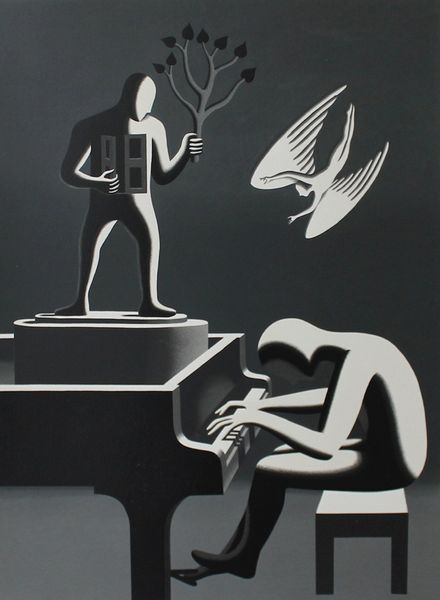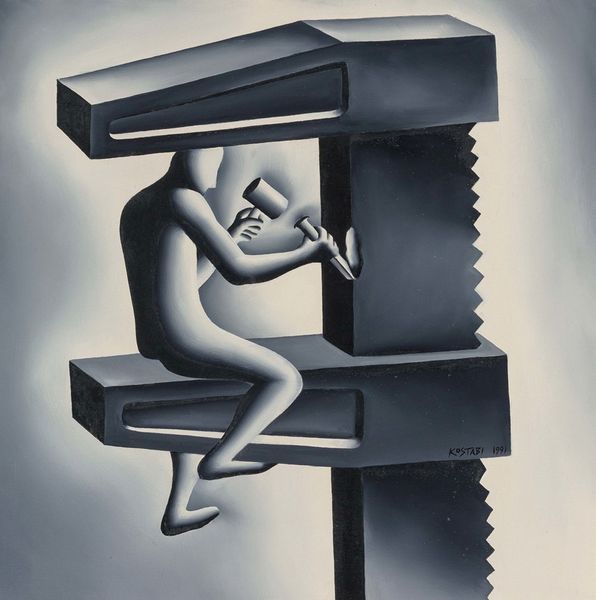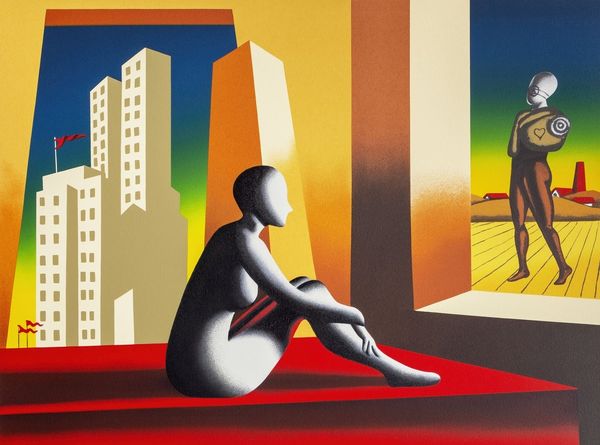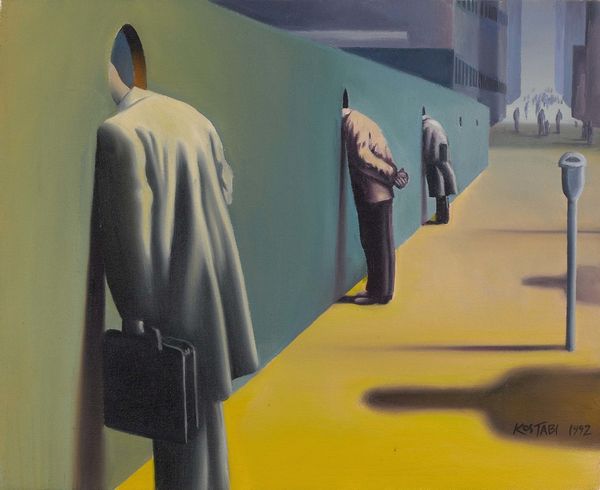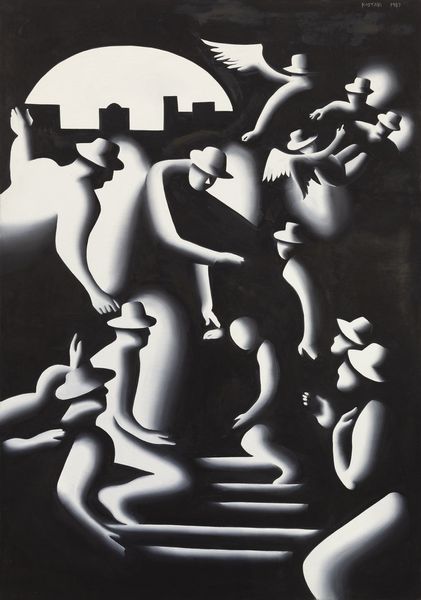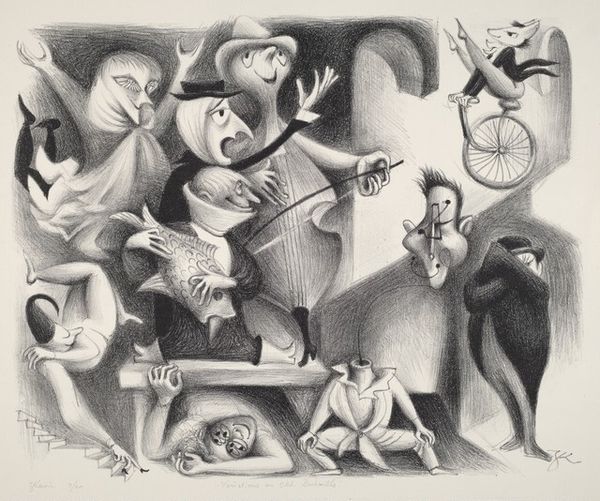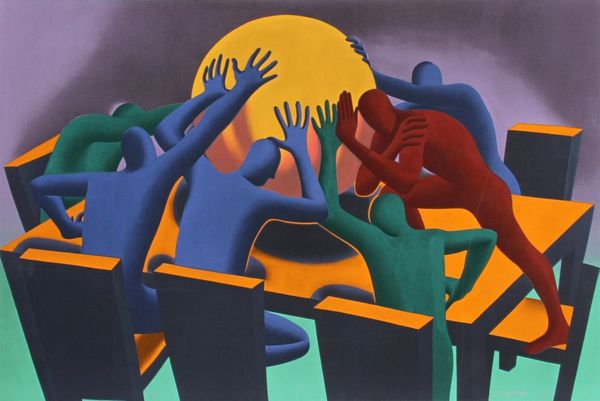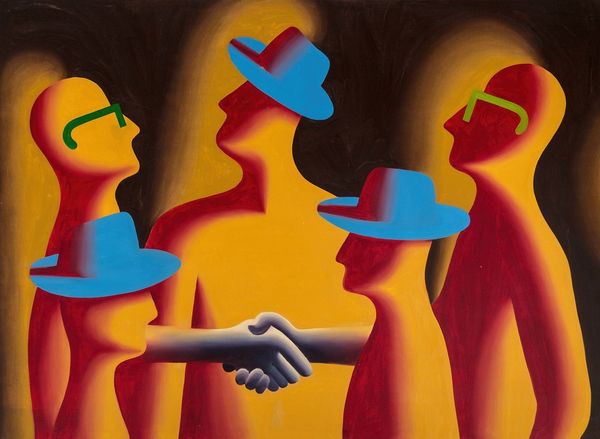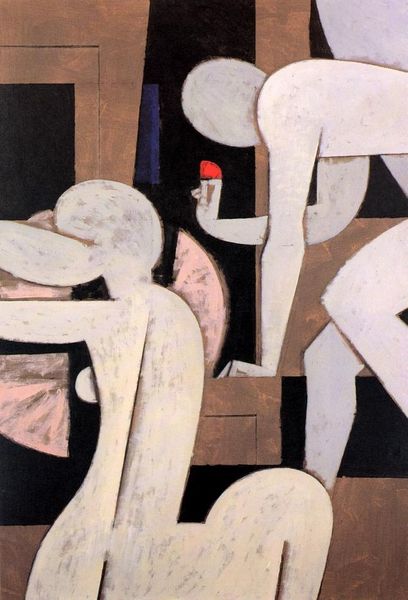
Copyright: Modern Artists: Artvee
Curator: Mark Kostabi's "The Symbolic, The Imaginary, and the Real," painted in 1989. It’s quite striking, isn't it? Editor: Absolutely. The first thing that hits you is this pervasive stillness, a sense of carefully arranged forms in monochrome. Curator: It exemplifies Kostabi's characteristic style—uncannily anonymous figures inhabiting sparse environments. This particular piece certainly encapsulates the anxieties and artistic concerns of the late 1980s. There’s a societal emptiness on display that’s palpable. Editor: Right, the almost mannequin-like figures enhance that detached, dreamlike quality. But notice how the rendering is very smooth, highlighting form with almost neoclassical modelling. The plants give off an ethereal glow around the edges, which offers an unexpected visual harmony to the strange scene. Curator: They're representative, perhaps, of growth or hope in an era of societal disillusionment. And the building held by one figure certainly gives some clues. But what about its placement directly over where one would expect a heart? Is it possible the building shows that this individual now holds business to be central in place of emotional intelligence? Kostabi was extremely critical of the increasingly commercial art world. Editor: Yes! That building presents a fascinating internal/external structure. Its placement makes us question what it's meant to hold or replace. But also the symbolism can change through art historical context—the way Kostabi is arranging and formalizing the elements adds complexity. Curator: And that is central to understanding Kostabi. He's engaging in a visual dialogue about the values, fears, and power structures shaping late 20th-century society. His art really challenged institutions to re-examine their purpose, didn't it? Editor: It certainly did, but taken simply as a composition of color and mass, it creates a strong impression of isolated, self-contained form—elements interacting, almost unconsciously, across a subtly shifting plane. I appreciate the layers upon layers of interpretation it offers, with those monochromatic values being more striking the longer I look at it. Curator: Yes, this is a statement reflecting that late 20th century ambivalence about society’s course. Editor: Ultimately, an intriguing, beautiful encapsulation of cultural feeling expressed by such unique symbolism.
Comments
No comments
Be the first to comment and join the conversation on the ultimate creative platform.

